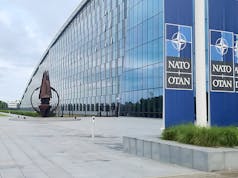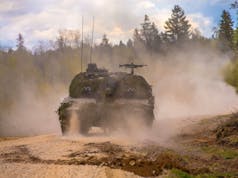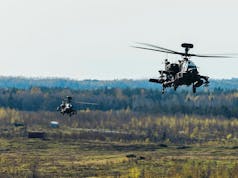With NATO support, a specialised course at the Ordnance School of the Irish Defence Forces teaches commanders how to end a terrorist attack with minimal casualties.
Marauding terrorist attacks can take many forms: from the complex assaults in Brussels and Paris to the single shooter attack on tourists in Sousse, Tunisia, to the use of vehicles and knives. NATO say that due to the dynamic nature of such attacks, it has proven difficult to prepare security forces, including first responders, to deal with these situations.
“One very important lesson we have learnt over the last number of years, particularly in Afghanistan and Iraq, is that improving people’s situational awareness helps mitigate the effects of the terrorist attacks.”
Captain Alan Kearney is a serving officer within the Irish Defence Forces with 30 years’ service. He has extensive experience both at home and abroad in C-IED and has worked alongside Ordnance School Commandant Lt Col Ray Lane in developing the wider international C-IED effort since 2008. He said here:
“Designed to reduce the risk of responders being killed, a Command Level Advanced Situational Awareness Training module has been introduced into the November 2017 course. It adapts the successful US Marine Corps Combat Hunter programme to a marauding terrorist environment. Boeing Defence will provide situational awareness analysis focused in the ‘right of bang’ environment familiar to proponents of C-IED (that is, training leaders to deal with a dynamic terrorist event after it has begun and is underway). Boeing has essentially added a scientific component to experiential learning.
Overall, the 2017 course will build on the success of the first two iterations. The Ordnance School will provide input on countering and defending against IEDs at command level, as well as managing and directing the course. Diversity in both instructors and students promises to provide for a challenging and dynamic output.
The inclusion of the military in every effort to develop a sound C-MTA response plan is a key enabler for success in this endeavour. Many military theatres of operation have proved to be enormously challenging, resulting in expertise that does not exist in any civilian agencies. No single state entity has the ability, skills or resources to respond to these attacks on its own. The terrorists that have undertaken these kinds of attacks in our homelands thus far have had minimal, if any, military training and have been lightly armed or utilised available resources such as vehicles and knives – and yet they tax our capacities immensely.
Our experience from operational theatres, coupled with a thorough understanding developed by experienced military operators, points towards the possibility of more complex attacks in our homelands further down the road. So, we cannot afford to be complacent. The military has the experience and knowledge required to prepare and work with all actors to meet this developing threat. Lessons learned and capabilities developed from this course – which involves students from emergency services, private sector and other state agencies – could be replicated at a national level.”













Interesting but MPS Counter Terrorist Command and UKSF have plenty of experience in this field and don’t need teaching by the IDF!
Who the hell would send anybody there for training? Almost everyone in NATO has vastly more experience in every field.
I’d say IDF have more experience with terrorism considering they were once terrorists.
Well from that point of you I do see your point.